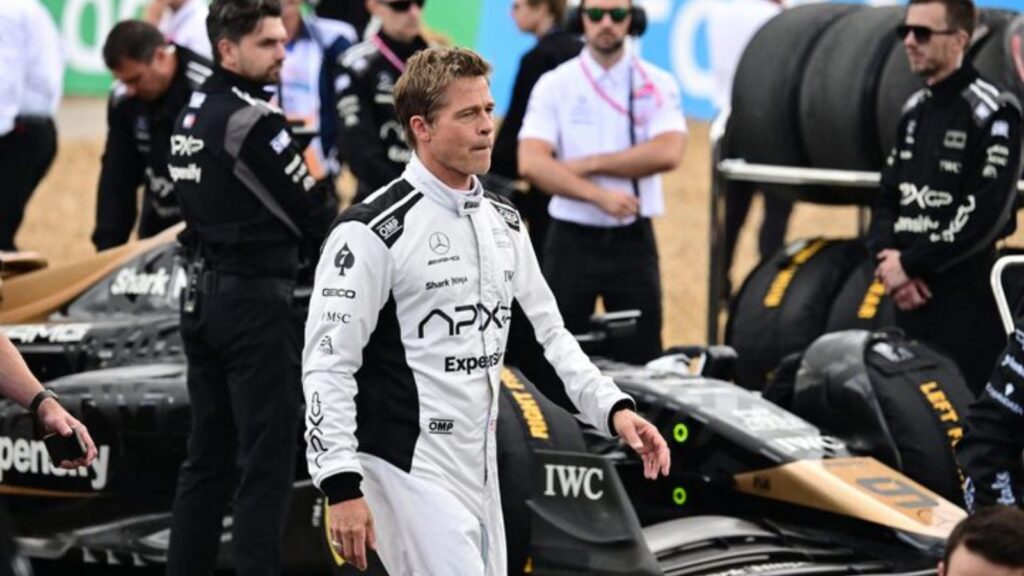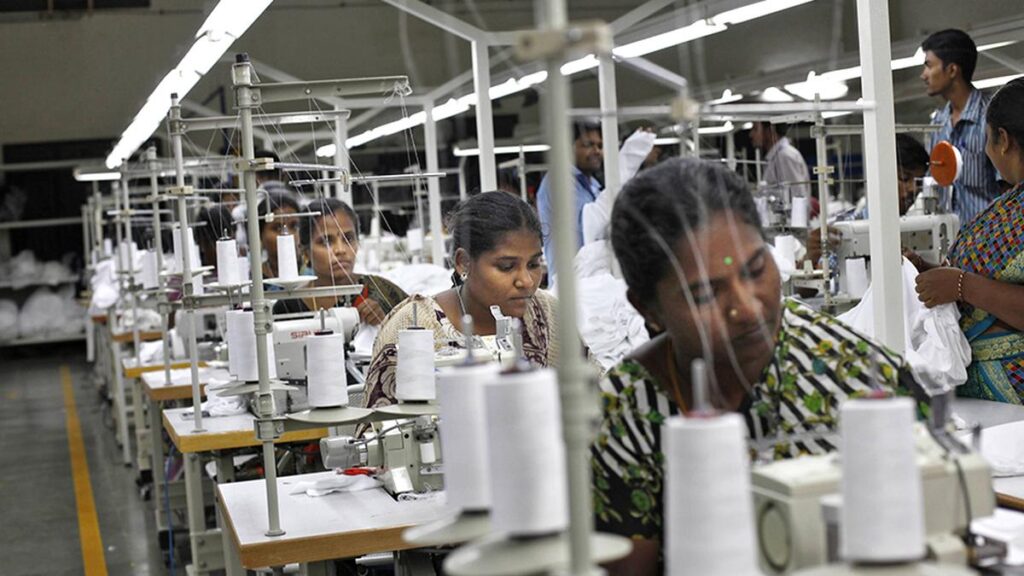F1: The Movie uses speed as a language, and director Joseph Kosinski speaks it fluently. With sweeping camera work, cockpit POV, and a remarkable score by Hans Zimmer, the film captures the kinetic intensity of Formula 1 like never before. But, while the visuals boost adrenaline and the engines roar, the movie lacks the emotional weight or narrative subtlety needed to keep pace with its technical prowess. It’s a spectacle well worth looking at, but one that never quite shifts into top gear where storytelling is concerned.
Brad Pitt stars as Sonny Hayes, a retired driver brought back into the F1 world to mentor a rising star for a fictional 11th team on the grid – APXGP. The setup is familiar and not without charm: the weathered veteran, the ambitious newcomer, the gruff but loyal pit crew. Hayes walks through paddocks and press conferences like a man trying to outrun his past, and Pitt imbues him with a seasoned gravitas that is, at times, magnetic. He’s better when he’s behind the visor than in front of the camera, though, not because of a lack of performance, but because the script rarely gives him more than recycled sports-film wisdom to deliver.
The most consistent star of the film is the camera itself. Claudio Miranda’s cinematography is one to be remembered. Kosinski and his crew collaborated with F1 engineers and the teams themselves to rig actual race cars with cameras, and the result is immersive in a way that very few racing films have been able to achieve. The viewer isn’t just watching a race, they’re a part of it. One can feel the tension of a late-braking duel into Turn 1, the turbulence of turns at Silverstone, and the stillness of the grid before the storm.
The final race sequence caps this film on a high. Using natural light and gritty track-side realism, it is a masterclass in action choreography. The transitions between cockpit POV, aerial tracking, and static ground-level shots are seamless. Kosinski builds an epic finish, not just with throttle and speed, but with spatial coherence and a rising tempo. Every overtaking manoeuvre and pit wall reaction feels earned. It is reminiscent of the final scene in Whiplash (2014), where the audience becomes one with the final act of delivering what the film has been building towards in its entirety, and is gripped to the edge of their seats. For those final 15 minutes, F1: The Movie leaves fiction behind and becomes a pure love letter to the sport.
Still, beneath all the technical glory, the film’s emotional ground feels underdeveloped. The narrative arc never strays far from the well-worn path of sports redemption: broken hero, second chance, slow build, triumphant return. There’s comfort in the familiarity, but little surprise or sharpness. The drama is formulaic where it could have been introspective, and too often, characters serve roles rather than becoming people. Most crucially, the film lacks the emotional connection that audiences were able to build with characters in films like Rush and Ford v Ferrari, where the racers are not merely present on the screen, they are a hearty addition to the ordinary lives of those watching.
The dialogue tends to lean on exposition and cliché, and while there are moments of sincerity, especially in quieter scenes between Hayes and his engineers, they’re often smothered by the film’s need to move fast. In trying to emulate the relentless pace of Formula 1, the film forgets that reflection is not the enemy of rhythm; it’s what gives it meaning.
The most glaring blind spot is in its portrayal of women. Kerry Condon plays Kate McKenna, F1’s first female Technical Director in the film’s universe, yet the script undercuts her authority at almost every turn. Initially introduced as a sharp strategist and team architect, McKenna is soon reduced to a background figure, then a love interest. Her scenes feel functional, and the same applies to other women in the narrative, such as a pit‑crew mechanic, who is relegated to comic relief, fumbling tools until she’s rescued by male characters (even though it is passingly addressed in a smart retort to Pitt). Mechanics, reporters, even rival team principals are allowed complexity or presence. In an era where F1 is actively working to expand its female talent pool and viewership, the film’s gender politics feel regressive, even lazy.
Story continues below this ad
To its credit, the movie does succeed in other forms of representation. The inclusion of real-world drivers, appearing in cameos or background paddock sequences adds credibility. The fictional team APXGP, built from the bones of real F2 infrastructure, mirrors F1’s own aspirations toward accessibility and future expansion. And in the age of Drive to Survive, where the sport’s drama is increasingly defined by its narrative packaging, this feels like a logical, if slightly sanitized, cinematic evolution.
In the end, F1: The Movie delivers on the spectacle but not quite on the soul. For what it builds up in soothing the eyes, it lacks in heart. For fans, it’s a reminder of why they love the sport. For the uninitiated, it’s a focused close-up rather than the big picture. And for the sport itself, it’s a powerful piece of image-making. It captures the speed, the sound, the smoke, but not always the silence in between.







